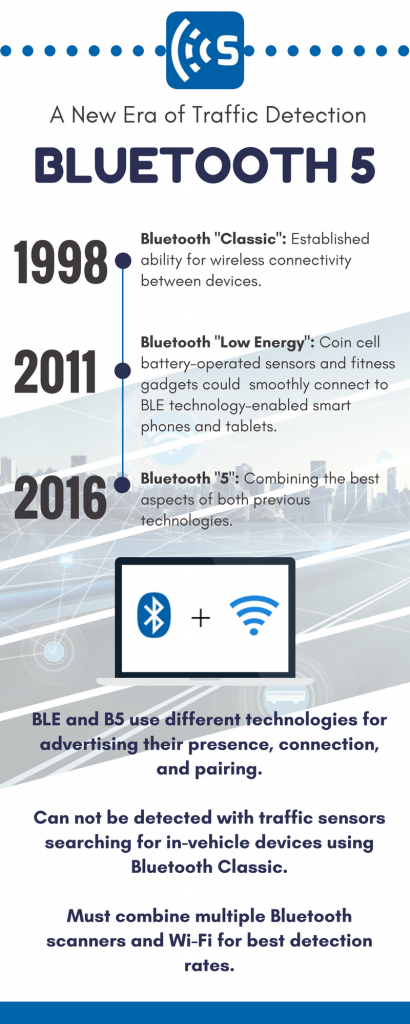The world of technology is forever changing. Though few would deny this, many fail to jump on board as the trends fly past them. In any industry, companies who are “set in their ways” risk losing everything in the blink of an eye. To mitigate this, it is important to focus on the future and meet changes with solutions. The introduction of Bluetooth 5 is no exception. Now, all we have to do is catch up…
Evolution of Bluetooth
1998: “Classic” Bluetooth technology was first introduced. The advancement shocked the world by eliminating the need for wires when streaming data between devices. Since its introduction, Classic Bluetooth technology has provided a robust wireless connection between millions of devices, encompassing everything from headsets all the way to navigation systems in cars.
2011: The debut of Bluetooth “Low Energy” (BLE) technology. With its extremely low power consumption, unique characteristics, and new features, BLE opened the door to new applications. So much more was possible than what had been with the Classic. Coin cell battery-operated sensors and fitness gadgets could smoothly connect to BLE technology–enabled smart phones and tablets. Despite these exciting new advancements, Classic Bluetooth kept its position in the market. This was due to its superior voice communication applications using BR/EDR protocol. BLE throughput was not designed for voice communication applications, so in this category it fell short. As a result, chip manufacturers designed Dual-mode modules to provide both BLE and Classic connectivity. This addressed both the low energy/low data rate and high throughput needs.
2016: The recent introduction of Bluetooth 5 can combine the best of both worlds. Important updates such as a quadrupled range and doubled speed were added to the existing BLE technology. According to Tech Insider, this can enable the implementation of new applications such as voice communication which had not been efficient or feasible using existing BLE technology.
Moving Forward
Although this could be a good news for companies and users of the technology, alarms went off in cities and municipalities. They had relied on getting their traffic data through Bluetooth sensors and MAC address detection. These sensors registered passing vehicles with in-vehicle Classic Bluetooth devices. BLE and Bluetooth 5 use different technologies for advertising their presence, connection, and pairing. This means they can not be detected with current traffic sensors which have been searching for in-vehicle devices using Classic Bluetooth. As this technology became obsolete, sensor owners risked losing a valuable data source to measure travel time and monitor their roads traffic performance .
In this scenario, very quickly, most Bluetooth traffic sensors will not even be able to keep up their current detection sample size (2-5%). Cities and municipalities will need to reevaluate where they are choosing to focus their time and resources. They would be wise to target investments in technologies that are able to have alternative detection methods as that is where the future of the industry lies.


